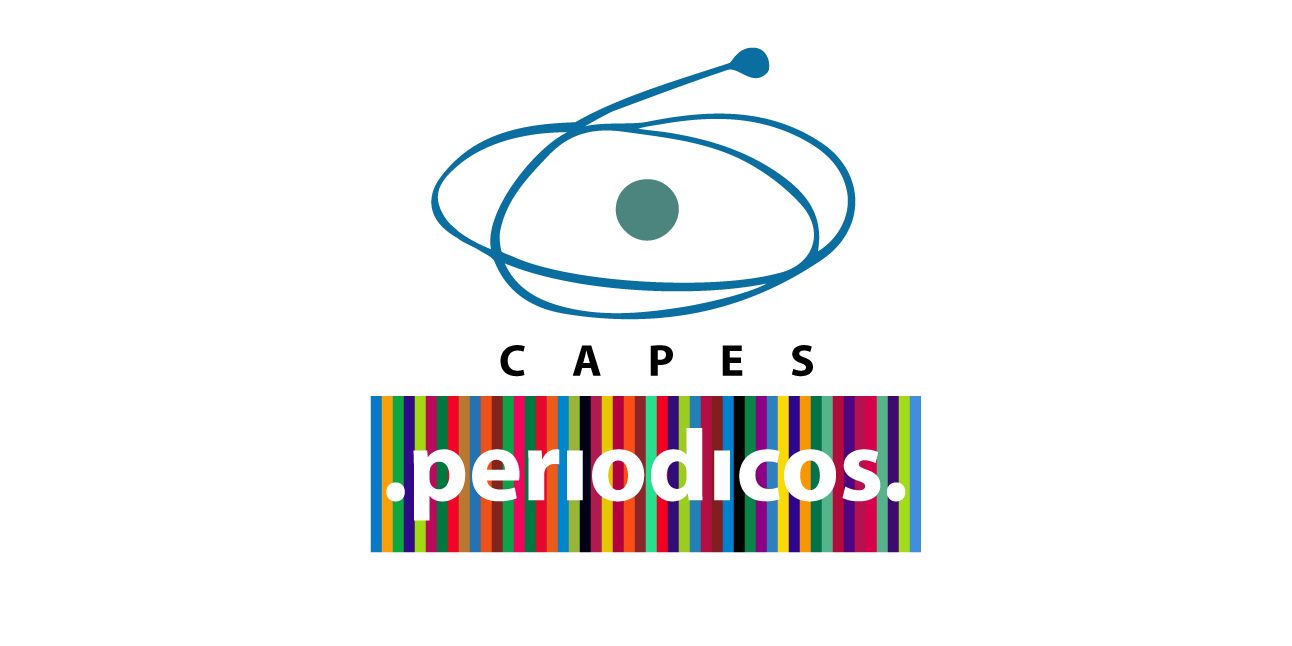GASTROINTESTINAL PARASITES IN SHEEP BRED IN THE NORTHERN PLATEAU OF SANTA CATARINA, BRAZIL
DOI:
https://doi.org/10.17765/1518-1243.2019v21n2p143-152Keywords:
Sheep breeding, OPG, Coproculture, ParasitismAbstract
For many years sheep breeding has greatly benefitted Brazilian agribusiness and world economy, with herds mainly concentrated in the northeastern and southern regions of the country. However, although there has been a growing demand in meat, milk and wool, limitations due to numberless conditions in sanitary management are present. Gastrointestinal parasitosis interferes directly in the herds´ health. Current analysis evaluates the occurrence of gastrointestinal parasites in sheep herds in Canoinhas and Três Barras SC Brazil. Fecal samples of 103 pure and crossbreed sheep and different age brackets from four herds were examined between May and June 2019 by Gordon and Whitlock technique and coproculture. Variables (race, age, genus and herd) were analyzed by Student and chi square tests, demonstrating 67.96% of sampled sheep with oocytes of genus Eimeria and 80.58% positive for gastrointestinal helminth eggs, featuring the order Strongylida and genera Trichuris sp., Toxocara sp. and Moniezia sp. Further, 64.08% had mixed infection by helminths and protozoa. Larvae identified by coproculture showed infection by genera Haemonchus, Oesophagostomum, Trichostrongylus Cooperia and Ostertagia. Degree of parasite infection provided statistical difference for Strongylida helminths when lambs and adult animals were compared (p=0.011). Genera Haemonchus and Trichostrongylus proved to be the most important and abundant in gastrointestinal parasitism in sheep in the northern plateau of the state of Santa Catarina, Brazil.References
AHID, S. M. M.; SUASSUNA, A. C. D. et al. Parasitas gastrintestinais de caprinos e ovinos da região oeste do Rio Grande do Norte, Brasil. Ciência Animal Brasileira. v. 9, n. 1, p. 212-218, 2008.
AMARANTE, A. F. T. Controle de verminose ovina. Revista do Conselho Federal de Medicina Veterinária. Brasília, v. 11, n. 34, p. 19-30, 2005.
BRINKER, J. C.; ROCHA, A. G. et al. Identificação de espécies de Eimeria spp. em ovinos participantes na 33ª exposição internacional de animais no município de Esteio, RS. Revista Agrocientífica. v. 1, n. 1, p. 61-68, 2014.
CARDIA, D. F. F.; ROCHA-OLIVEIRA, R. A. et al. Immune response and performance of growing Santa Ines lambs to artificial Trichostrongylus colubriformis infections. Veterinary Parasitology. v. 182, n. 2-4, p. 248-258, 2011.
CLIMATE-DATA.ORG. Disponível em: <https://pt.climate-data.org/america-do-sul/brasil/santa-catarina/canoinhas-43657/> Acesso em: 10 jul. 2019.
COSTA, V. M. M.; SIMÕES, S. V. D.; CORREA, F. R. Controle das parasitoses gastrintestinais em ovinos e caprinos na região semiárida do Nordeste de Brasil. Pesquisa Veterinária Brasileira. v. 31, n. 1, p. 65-71, 2011.
DOMINGUES, L. F.; GIGLIOTI, R., et al. In vitro and in vivo evaluation of the activity of pineapple (Ananas comosus) on Haemonchus contortus in Santa Inês sheep. Veterinary Parasitology. v. 197, p. 263-270, 2013.
DUARTE, E. R.; SILVA, R. B. et al. Diagnóstico do controle e perfil de sensibilidade de nematódeos de ovinos ao albendazol e ao levamisol no norte de Minas Gerais. Pesquisa Veterinária Brasileira. v. 32, n. 2, p. 147-152, 2012.
GILLEARD, J. S. Haemonchus contortus as a paradigm and model to study anthelmintic drug resistance. Parasitology. v. 140, n. 12, p. 1506-1522, 2013.
GORDON, H. M. L.; WHITLOCK, H. V. A new technique for counting nematode eggs in sheep faeces. Journal of the Council for Scientific and Industrial Australian. v.12, n.1, p.50-52, 1939.
HASSUM, I. C.; MENEZES, R. C. A. A. Infecção natural por espécies do gênero Eimeria em pequenos ruminantes criados em dois municípios do estado do Rio de Janeiro. Revista Brasileira de Parasitologia Veterinária. v. 14, n. 3, p. 95-100, 2005.
IBGE. Instituto Brasileiro de Geografia e Estatística. Produção de Pecuária Municipal. v. 43, 2016.
LIMA, J. D. Coccidiose dos ruminantes domésticos. Revista Brasileira de Parasitologia Veterinária. v.23, n. 1, p. 9-13, 2004.
LOPES, J.; SANCHES, J. M. et al. Avaliação de diferentes princípios ativos no controle de helmintos gastrintestinais em rebanho ovino na região do Taiano – Roraima. Revista Brasileira de Ensino de Ciências Agrárias. v. 1, p. 85-103, 2013.
MACIEL, W. G.; FELIPPELLI, G. et al. Helminth fauna of sheep from the micro region of Jaboticabal, São Paulo State, Brazil. Ciência Rural. v. 44, n. 3, p. 492- 497, 2014.
RAMOS, C. I.; BELLATO, V. et al. Epidemiologia das helmintoses gastrintestinais de ovinos no Planalto Catarinense. Ciência Rural. v. 34, n. 6, p. 1889-1895, 2004.
REEG, K. J.; GAULY, M. et al. Coccidial infections in housed lambs: oocyst excretion, antibody levels and genetic influences on the infection. Veterinary Parasitology. v.127, p.209-219, 2005.
RETORE, M.; CORREA, E. B. Principais Doenças Diagnosticadas nos Rebanhos Ovinos de Mato Grosso do Sul. Embrapa Agropecuária Oeste. 1° Edição. Dourados, MS: 2015. ISSN 1679-043X.
ROBERTS, F. H. S.; O’SULLIVAN, J. P. Methods for egg counts and larval cultures for strongyles infesting the gastrointestinal tract of cattle. Australian Journal of Agricultural Research. v. 1, p. 99-102, 1950.
SCHAFER, A. S.; LEAL, M. L. R. et al. Immune response of lambs experimentally infected with Haemonchus contortus and parenterally treated with a combination of zinc and copper. Small Ruminant Research. v. 123, n. 1, p. 183-188, 2015.
SCHILD, A. L.; et al. Doenças diagnosticadas pelo Laboratório Regional de Diagnóstico no ano 2014. Boletim do Laboratório Regional de Diagnóstico. v. 37, n. 1, p. 9-27, 2015.
TOMPOROSKY, A. A.; MARCHESAN, J. Planalto norte catarinense: algumas considerações sobre aspectos históricos, características físico-naturais e extrativismo. Estudos sobre alternativas de desenvolvimento territorial para o Planalto Norte Catarinense (PNC). v. 6, n. 2, 2016.
UENO, H.; GONÇALVES, P. C. Manual para diagnóstico das helmintoses de
ruminantes. 2 ed. Japan International Cooperation Agency (JICA). p. 143,
Downloads
Published
How to Cite
Issue
Section
License
The Editorial Board is authorized to make certain changes in the original text to comply with bibliographical norms, orthography and grammar, so that standards in language and style may be maintained. However, the author´s style will be preserved. The concepts developed by the authors are their exclusive concern and responsibility.In case of approval, the e-mail of acceptance will contain a Letter of Copyright with authors´ name, personal data, and signature of all authors.










